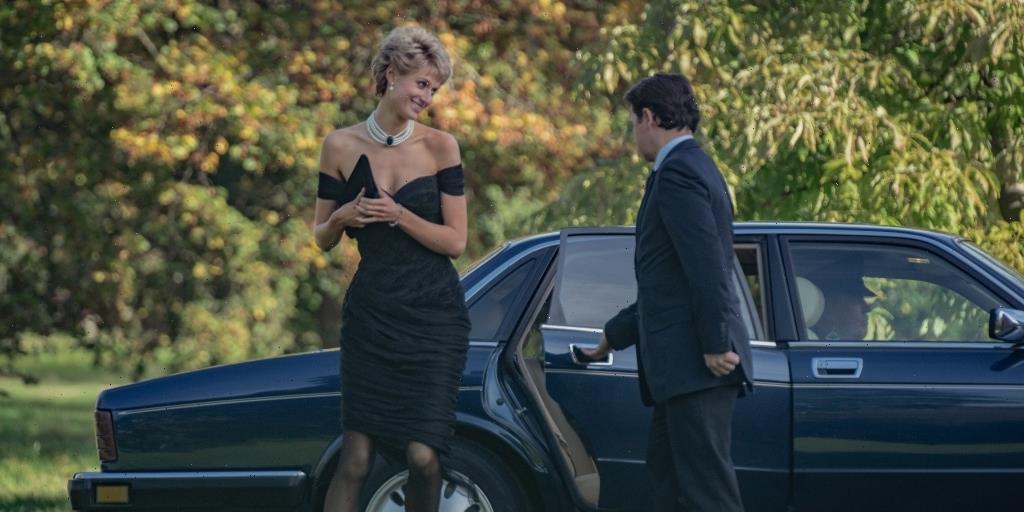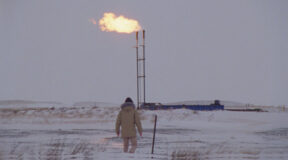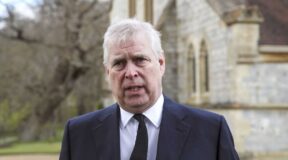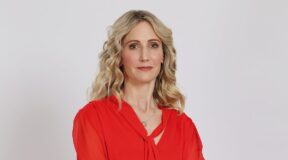Taking place from 1991 to 1997, Season 5 of “The Crown” captures a time of reckoning as the royal family faces what may be their biggest challenge yet: proving their continued relevance in ’90s Britain. As Diana (Elizabeth Debicki) and Charles (Dominic West) move toward divorce, and other members of the monarchy examine their roles and their marriages, the public questions the relevance of the institution itself.
Creator and writer Peter Morgan says, “It felt, in the early ’90s, like a family in crisis, and the thing about the monarchy is if the family is in crisis, then it naturally spills over.”
This season, “The Crown” introduces its third and final cast. Imelda Staunton picks up where Olivia Colman left off as Queen Elizabeth, with Jonathan Pryce as Prince Philip; Lesley Manville as Princess Margaret; Claudia Harrison as Princess Anne; and Olivia Williams as Camilla Parker Bowles.
Also newly introduced to the narrative are Prime Minister John Major (Jonny Lee Miller), Diana’s future love interest Dodi Fayed (Khalid Abdalla) and his father Mohamed Al-Fayed (Salim Daw), as well as writer Andrew Morton (Andrew Steele), television journalist Martin Bashir (Prasanna Puwanarajah) and Margaret’s former paramour Peter Townsend (Timothy Dalton).
The cast’s camaraderie is palpable on screen. Even when the characters are at odds, there is an inherent kindness in the way they are portrayed. As executive producer Suzanne Mackie explains of the series’ creative approach to the characters, “We never sit in judgment. We’re always sympathetic and try to understand.”

In transforming into the male figures of the royal family, West and Pryce found their own ways into exploring their versions of Charles and Prince Philip, respectively. “This is an evoking of a character,” West explains of his ultimate approach. “This is fiction and a dramatization. You’re not really going for imitation … you’re just aiming for the truth of the scene.” Pryce adds, “The beauty of the exploration is of their emotional lives and what is behind the eyes.”
But front and center are the Windsor women, each trying to find her ways amid deepening rifts. Leading the charge is Staunton’s Elizabeth, who remains stoic despite those unraveling around her. “She has many issues to deal with, which makes for very good writing,” says Staunton. “There are a lot of things to tackle rather than the queen going about her duties.”
Arguably, the greatest pressure was on the actor taking up the mantle of playing Diana following Emma Corrin. Debicki plays Diana in the ’90s, a decade in which the royal was the most photographed woman in the world.
Debicki dove into her character’s “bible” of facts provided by head of research Annie Sulzberger, and also studied archival footage. “I remember the moment I saw Elizabeth as Diana,” Manville says. “I looked up as Elizabeth walked through, and I nearly choked. It was really spooky, like [Diana] had risen from the dead.”
Manville wasn’t the only one dazzled by the transformation. Says director Jessica Hobbs, “When we did street scenes and she stepped out of the car, people would go crazy. You’d hear them screaming, ‘Diana! Diana!’”
From evening gowns to denim, Season 5 sees Diana in re-creations of her most memorable outfits, including the iconic “revenge dress” that sits in the pantheon of ’90s looks. Both hair and makeup designer Cate Hall and costume designer Amy Roberts return to “The Crown” for another season of crafting impeccable period looks. The hair, makeup and costumes all aided Debicki in telling the story of Diana’s later years.
“The beautiful thing about what we got to do in this era of her wardrobe was that so much of the story, for me anyway, is about the evolution of a human becoming able to be themselves. To trust their worth and move away from [the] establishment and move away from other people’s ideas of themselves,” says Debicki.

Transforming Debicki represented one of the greatest challenges and most exciting creative opportunities for hair and makeup designer Hall. “The first wig we had made was that very iconic crop in the early ’90s — which is one of the least flattering hairstyles ever,” Hall says. “Only Elizabeth Debicki or Princess Diana could pull it off. [But] when you see her transformation through the series into her final look, which is so modern and so glossy, the Diana that we all remember from the last years of her life, I don’t think we’d have got there intellectually without going through that early ’90s look.”
Meanwhile, for costume designer Amy Roberts, color has always been an integral element to defining each era of “The Crown.”
“Season 3, which is the first one I did, was pinks and yellows, and quite lighthearted in a way. Then it got darker with Season 4 and the marriage of Diana and Charles,” she notes. “This one now, with our amazing new cast, is a whole different ballgame. This one felt more melancholic, more autumnal. We have an older royal family and queen, and everything’s going really wrong.”
This season is additionally shaped by the Emmy® Award-winning talents of production designer Martin Childs and cinematographer Adriano Goldman, who continue to bring an elevated aesthetic to the series. Over 40 new sets are showcased this season, with locations from the grandeur of Imperial Russia to Diana’s private apartment at Kensington Palace.
“The Crown” is currently filming its sixth and final season. Debicki, for one, sees her own journey reflected in that of Diana, whose story she describes as an evolution. “It’s so easy to back away from having to grow because it’s scary,” she says. “This show presented an opportunity to constantly reconfront the challenge. I learned so much from the other actors and the directors, and from being in a kind of contact with this amazing, remarkable person. It was a gift.”
Read More About:
Source: Read Full Article





